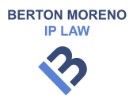Trade Marks & Copyright 2024
Argentina
Trends and Developments
Licensing of Artists’ and Celebrities’ IP rights in Argentina
Licensing agreements include several rights and obligations between the licensor and the licensee/s, as well as the guarantee in favour of the licensee/s that the licensed content is free of limitations and is duly owned by the licensor or authorised by the owner to license said content subject to IP protection. Even when Argentina follows this practice and – in most instances – the content being licensed is protected, it may not be the case for certain artists and celebrities’ IP rights subject to a licence agreement.
There are many examples of well-known distinctive signs (such as brands, logos, iconography, photographs, paintings, and other works of art in general) that are used in many different ways to promote a product or service directly by the owner of the IP rights or conducted by a third party through the granting of a licence of said IP rights. Several brands – especially those regarded as well-known brands – are commercialised in a variety of consumer products, mainly for marketing and promotional purposes. However, in many cases, this line of business may bring strong revenues in addition to their core business. T-shirts, caps, backpacks, coasters, stickers, watches, mouse pads and toys are just a few examples of merchandising.
Owners of these distinctive signs usually seek and obtain trade mark and/or copyright protection in the countries or territories where the products are commercialized and/or in other jurisdictions where sales may take place in the short or medium term and/or where misappropriation or illegitimate uses by third parties are likely to take place.
It is of utmost importance to seek trade mark protection in the main categories (classes) of interest, in addition to other classes into which the different type of consumer products fall. By way of example, the Coca-Cola Company would protect their famous “COCA-COLA” brand in Class 32 (whereby soft drinks are classified) as well as in other classes such as Class 25 (t-shirts and clothing in general) and Class 16 (stickers and printed material in general).
However, this may not be the case for certain artists and celebrities who may have protected their name, logo, image and/or other distinctive sign in the class of main interest but not in other classes whereby products and/or services that are subject to a licence in favour of a licensee are classified.
Examples
It is very common to see t-shirts with images such as:
- the Rolling Stones’ famous “red tongue” (created more than 50 years ago);
- the “prism” that characterises the cover art of The Dark Side of the Moon album by English prog rock band Pink Floyd;
- the portrait of the UK’s Queen Elizabeth II with a safety pin through her mouth used by the Sex Pistols;
- the caricatures featured in the Beatles film Yellow Submarine;
- Jack Nicholson’s face in one of the most famous scenes from The Shining;
- the pop art-style portraits of Marilyn Monroe or Elvis Presley created by Andy Warhol;
- well-known phrases from the punk band Ramones (eg, “Hey Ho Let’s Go” or “Gabba Gabba Hey”), as well as their famous logo of the “eagle holding a bat”; and
- names of musical groups written with characteristic fonts such as those used by Iron Maiden, AC/DC, Kiss, Aerosmith, the Doors, David Bowie, Yes and many others.
In recent years, brands, logos, photographs, works of art (or parts thereof), phrases and other distinctive signs have been applied to other types of products, such as cans or bottles of beer, vodka, gin, whiskey, rum and other alcoholic beverages, watchstraps, cell phone cases, necklaces and bracelets, temporary tattoos, purses and bags, mousepads, coasters. Examples include:
- tequila bearing the brand “Rammstein” (a famous German rock group);
- whiskey bearing the brands “Elvis” (Elvis Presley) and “The Pogues” (a well-known Irish rock group);
- a Rolling Stones special edition of Crystal Head vodka;
- “Humphrey Bogart” gin by the Bogart’s Gin brand;
- beers linked to numerous rock groups (eg, AC/DC, Pearl Jam, Pantera, Deftones, Molotov, and Queen) – notably, “Trooper”, which takes its name from the title of one of the most famous songs by the English rock band Iron Maiden and includes on the label a depiction of their mascot “Eddie”, who appears in the cover art of all their albums;
- gin and whiskey featuring works of art by pop artist Jean-Michel Basquiat or characteristic symbols that he has used in many of his works (eg, the “three-pointed yellow crown” or “the dinosaur”); and
- polo shirts that feature the famous “barking dog” by pop artist Keith Haring.
Limited editions and/or special editions
There has been a noticeable trend towards the licensing of different IP rights for use in limited editions and/or special editions that celebrate an anniversary or an important milestone in the career, life or work of an artist or a celebrity. Even when these types of editions are intended to last a short time, IP protection should be considered by the licensor so as to guarantee the licensee that there is no risk in using the licensed IP rights.
Several examples have been found in different countries, including Argentina, as follows.
- Together with the Calicraft Brewing Company brewery, the Australian rock band AC/DC market the beers “PWR UP”, which identifies the title of their latest studio album, and “TNT”, which honors the title of the first album released by the band.
- In 2018, the New Zealand musical project known as Unknown Mortal Orchestra joined forces with the Garage Project distillery to market a craft beer under the brand “Hunnybee” in order to pay tribute to their country during their tour across New Zealand.
- The rock group Deftones released a beer under the “OHMS” brand in parallel with the release of their latest album.
- In 2021, the well-known North American band Pearl Jam – together with the Kettle House Brewing brewery – launched a beer under the brand “MPS Pool Ale” as a tribute to band member Jeff Ament’s non-profit organisation, Montana Pool Service.
- Together with the Canadian brewery Unibroe, the band Megadeth developed a beer with the name “A Tout Le Monde” in honour of the title of one of their most renowned songs. The label includes a depiction of the group’s mascot that appears in many of their albums.
- To celebrate their 25-year career, the renowned Brazilian rock band Sepultura launched a beer with the brand “Sepultura” written in the font that the band has been using for years.
- The famous US band Foo Fighters launched a beer under the “Foo Town” brand to commemorate the album Concrete and Gold.
- On the 20th anniversary of the release of their album Infame, the well-known Argentine band Babasónicos – together with the famous clothing company Levi’s – launched a collection of T-shirts featuring the cover art for the album, the name of the album, and the name of the band.
Trade mark and copyright protection in Argentina
Two of the principal vehicles for IP rights protection are trade marks and copyrights. The main bodies of relevant legislation encountered when addressing issues concerning trade marks and copyrights are:
- the Argentine National Constitution (enacted in 1853 and last amended in 1994) – IP rights are vested with constitutional protection and, in this regard, Section 17 recognises IP protection by providing that “all authors or inventors are the exclusive owners of their works, inventions or discoveries for the period of time established by law”;
- the Paris Convention for the Protection of Intellectual Property Rights (the “Paris Convention”) – Argentina adopted the Paris Convention of 20 March 1883, incorporating the Lisbon Act of 31 October 1958 (Sections 1 to 12) under Law No 17.011 of 17 November 1966 and the Stockholm Act of 14 July 1967 (Sections 13 in fine) under Law No 22.195 of 1 April 1980;
- the Trade-Related Aspects of Intellectual Property Rights (TRIPs) Agreement – Argentina has adopted the TRIPs provisions of the General Agreement on Trade and Tariffs (GATT) under Law No 24.425 of 5 January 1995; and
- the Berne Convention for the protection of literary and artistic works, adopted in 1886 (the “Berne Convention”) – Argentina ratified the Berne Convention under Law No 17.251 on 5 May 1967.
In Argentina, foreigners are granted the same legal rights as nationals with regard to the ownership of IP rights. They may apply for the registration of trade marks and copyrights under the same conditions as nationals.
Trade mark rights are territorial, so it is imperative to apply for and obtain their registration with the National Institute of Industrial Property (Instituto Nacional de la Propiedad Industrial, or INPI) in order to obtain ownership and ensure the enforceability of these rights. This does not specifically apply to copyrights.
Trade marks
Trade marks are governed by the Argentine Trade Mark Law No 22.362 (ATL) of 26 December 1980 (modified by Law No 27.444 of 30 May 2018). For the purposes of registration of trade marks, Argentina has adopted the international classification of goods and services corresponding to the Nice Agreement.
Section 1 of the ATL expressly indicates different types of signs that may be registered as a trade mark if they are distinctive enough to be considered trade marks. Said provision does not restrict the type of trade marks that can be protected under the ATL and leaves protection open to other types of signs that may be recognised as trade marks.
Section 1 of the ATL establishes that “the following may be registered as trade marks to distinguish products and services:
- one or more words, with or without meaning;
- drawings;
- emblems;
- monograms;
- engravings;
- stampings;
- seals;
- images;
- bands;
- combination of colours applied to a particular place on the products or containers;
- combinations of letters and of numbers;
- advertising phrases;
- distinctive reliefs; and
- all other distinctive signs”.
As regards ownership, Argentina follows the “attributive system” whereby the ownership of a trade mark and the right to its exclusive use are obtained only by a registration with the INPI (Section 4 of the ATL). However, Argentine courts have granted protection of unregistered trade marks based on notoriety and/or significant evidence of use.
Copyrights
Copyrights are governed by the Argentine Copyright Law No 11.723 (ACL) of 28 September 1933 (modified by Law No 25.036 of 11 November 1998). Section 1 of the ACL extends protection to scientific, literary, artistic or educational works, regardless of the medium.
As a result of the broad definition of protected works, copyright protection has been granted to:
- writings;
- musical works and plays;
- cinematographic, choreographic and pantomime works;
- drawings, paintings and sculptural works;
- architectural, artistic or scientific works;
- maps, plans, and other printed matter;
- artworks, photographs, engravings and phonograms;
- titles and characters as an integral part of a work;
- works of applied art;
- computer software and databases; and
- derivative works, new versions, compilations, translations, etc.
As regards ownership, Section 4 of the ACL establishes that the holders of IP rights over a work shall be:
- the author of the work;
- their heirs or legal successors;
- those who have the author’s permission to translate, revise, adapt, modify, or transfer the work to the new resulting intellectual work; or
- natural or legal persons whose employees have been contracted to devise a computer program and have produced such a program in the performance of their professional duties, unless stipulated otherwise.
As opposed to trade mark protection, Section 14 of the ACL states that the author of a foreign work must demonstrate that they have complied with the formalities for protection in their country. In fact, the Berne Convention governs recognition of foreign copyrights, which means that they need no formality other than the “Notice of Copyright” in order to be protected.
Even though works are recognised from the moment of creation, national registration of works is advisable in terms of a court action. Registration is immediate and is only a rebuttable presumption of ownership.
Adequate protection in licensing agreements
Having explained the legal framework for trade mark and copyright protection in Argentina and the different types of signs and works that can be protected, it is important to establish which signs and works that may be subject to a licence should be duly protected so that licensees are guaranteed that the licensed IP rights are owned by the licensor or that the latter holds sufficient authorisation to license said IP rights so as to avoid third-party claims or at least minimise these risks.
Artists usually protect their name or fantasy name in the class that better identifies their products or services – for example, it would be wise for a music band that is still active and touring around the world to seek trade mark protection in Class 41 (whereby “entertainment services in general” are classified) in countries where they usually perform. Legendary artists or those enjoying a peak of popularity usually seek trade mark protection for their name and other distinctive signs, such as a logo, in the jurisdictions where they usually render their services or where they are well known. However, this is not necessarily the case for other artists that are less popular – principally, those that enjoy a limited territorial influence (eg, in one country or one region).
Other distinctive signs could be protected under copyright law and, as previously explained, do not need to be registered with a national Copyright Office as in the case of trade marks.
A popular and legendary band such as the Rolling Stones may seek trade mark protection for the name of the band, for the famous red tongue logo, and for a well-known phrase such as “It’s only rock n’ roll but I like it”. They could also seek copyright protection for the red tongue logo, as it may have been considered a work of art, or invoke ownership of said work of art if it has not been registered with a Copyright Office.
In connection with several of the examples already mentioned, artists who commercialise alcoholic beverages with the name of the band or the name of an iconic album or a famous logo or work of art associated with the band by the general public should seek trade mark protection for said signs in Class 32 (“beers”) and/or Class 33 (“alcoholic beverages, with the exception of beers”). In this scenario, and again using one of the previously mentioned examples, it would be advisable for the English rock band Iron Maiden to protect their name in the special font as a trade mark, along with the name “Trooper” as a trade mark, and the depiction of their famous mascot “Eddie” as a trade mark and in Class 32 for “beers”. Copyright protection could also be claimed by the band in connection with “Eddie”, as the mascot could be considered a work of art.
In Argentina, several famous and popular artists have registered such signs principally as trade marks and thus enjoy adequate protection when enforcing their IP rights against infringers. This also guarantees any potential licensee that use of said signs as stipulated in the licence agreement is free of risk.
However, other signs matching the content that has been licensed to a licensee or licensees do not enjoy adequate protection and are only protected in the class of main interest (usually Class 41) – even if the goods being sold under the licence, for example, fall into Classes 9, 14, 16, 25 and 28. If an artist called The Owls only registered their name in Class 41 and a third party registered the name “Owls” in Class 25 for t-shirts several years before said artist became popular, could this third party – who did not act in ill faith and therefore owns a legitimate IP right over the brand in Class 25 – stop the owners of “The Owls” brand or their licensee commercialising t-shirts or related clothing bearing said brand? The answer is “yes”.
The fact that the band owns IP rights for services pertaining to Class 41 does not mean that they can freely use the same brand for other services and/or products. If The Owls granted a licence in favour of a third party for the sale of t-shirts with said name, they could be held responsible for any claim filed by the party that owns the same or a confusingly similar brand in Class 25.
Owners of licensed content should take all the necessary steps to seek adequate IP protection of said content in Argentina (and perhaps in neighbouring countries as well) so as to be in a better position when enforcing said rights against infringers and counterfeiters. This will also guarantee licensees that the licensed content is free of limitations and does not violate third parties’ rights.
Berton Moreno IP Law
Avenida del Libertador 5990
8th Floor
C1428 Buenos Aires
Argentina
+54 11 3989 9773
jbm@bertonmoreno.com.ar www.bertonmoreno.com.ar


